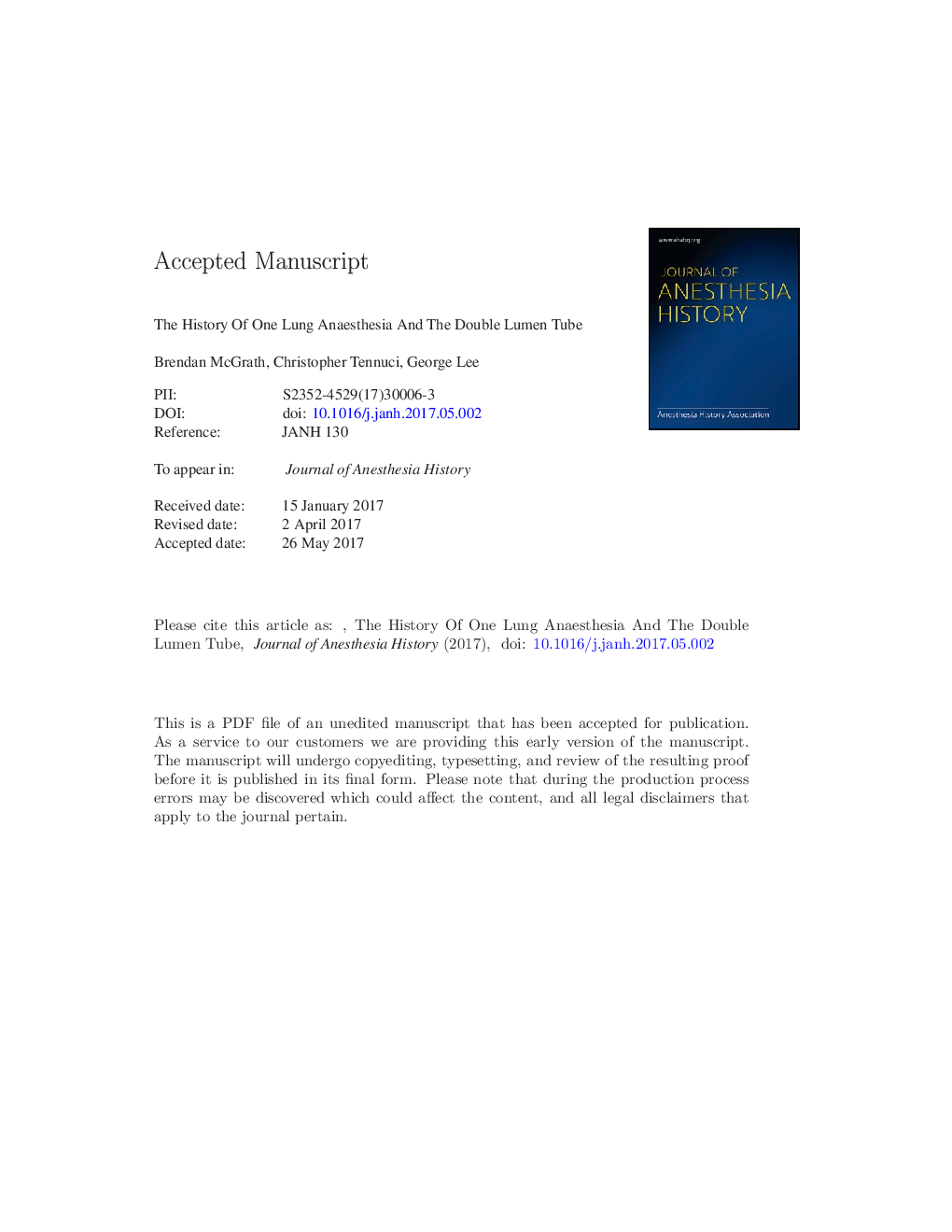| Article ID | Journal | Published Year | Pages | File Type |
|---|---|---|---|---|
| 7518102 | Journal of Anesthesia History | 2017 | 57 Pages |
Abstract
One-lung anesthesia presents many practical, anatomical, and physiological challenges to the anesthetist in modern day practice. The techniques and equipment that we use today have developed slowly over the course of the last century. The idea of isolated lung ventilation came from bronchospirometry studies by pioneering physiologists as early as 1871, and some of their original equipment was adapted for clinical use in the 1930s. Anesthetic techniques have generally been developed to facilitate surgical advances, and the development of double-lumen tubes is no exception. The development of the double-lumen tube was sporadic and occurred mainly to allow more complex thoracic procedures, mostly associated with suppurative lung disease. Once the need for independent ventilation of the lungs was identified in clinical practice, pioneers of the technique developed their own methods and often their own equipment. This led to the ability of the anesthetist to be able to control ventilation to each lung, including collapse of the operative lung and protection of the isolated lung against contamination. As these anesthetics became more reliable, the surgical scope for one-lung anesthesia began to broaden, and today one-lung ventilation is used to facilitate thoracic surgery, mainly on the lung, but also esophageal, thoracic wall, and mediastinal surgical procedures.
Related Topics
Health Sciences
Medicine and Dentistry
Anesthesiology and Pain Medicine
Authors
Brendan McGrath, Christopher Tennuci, George Lee,
